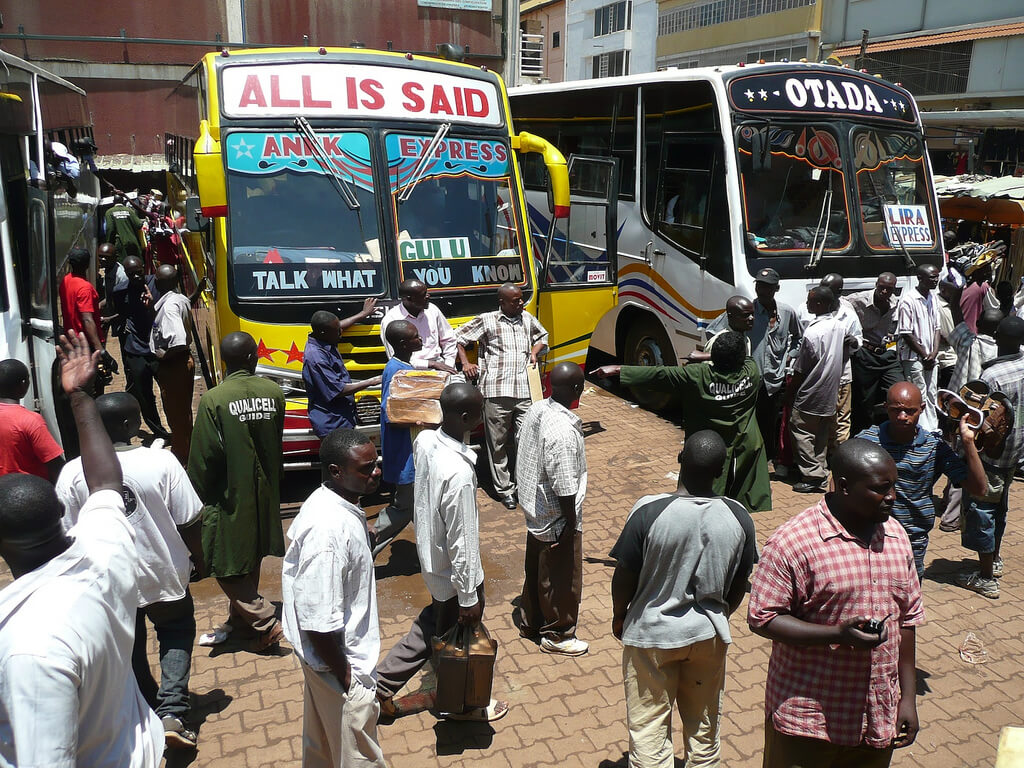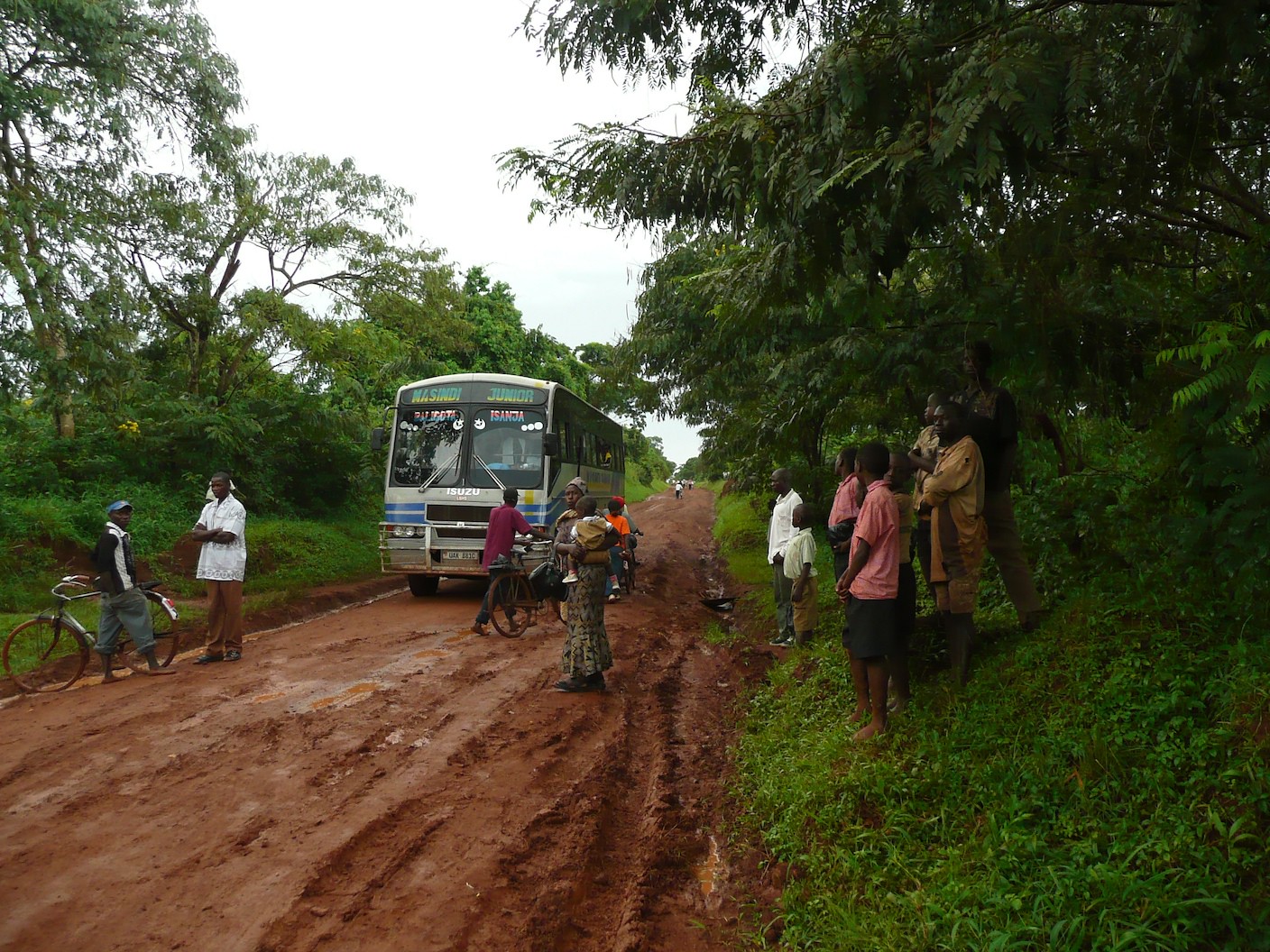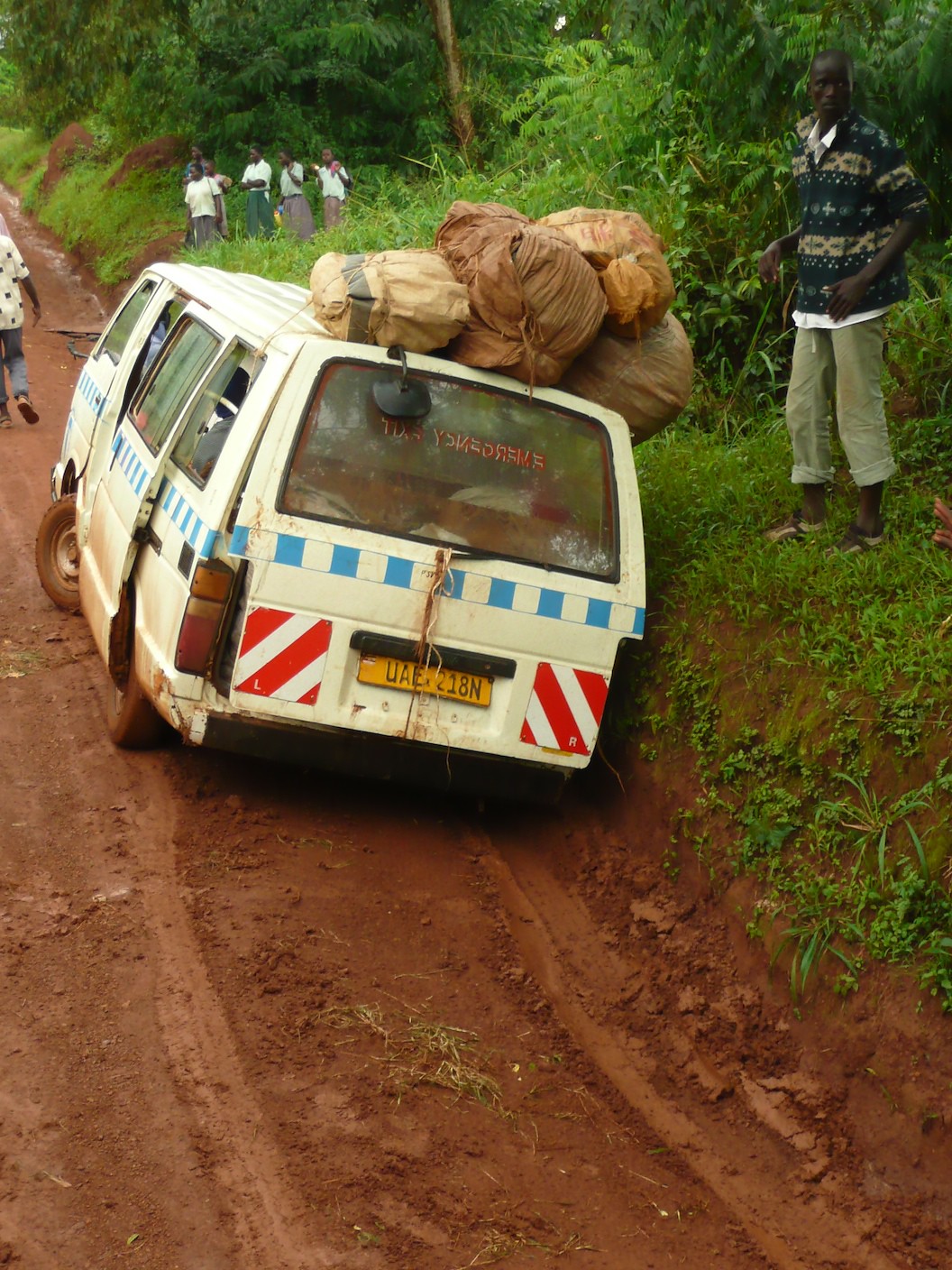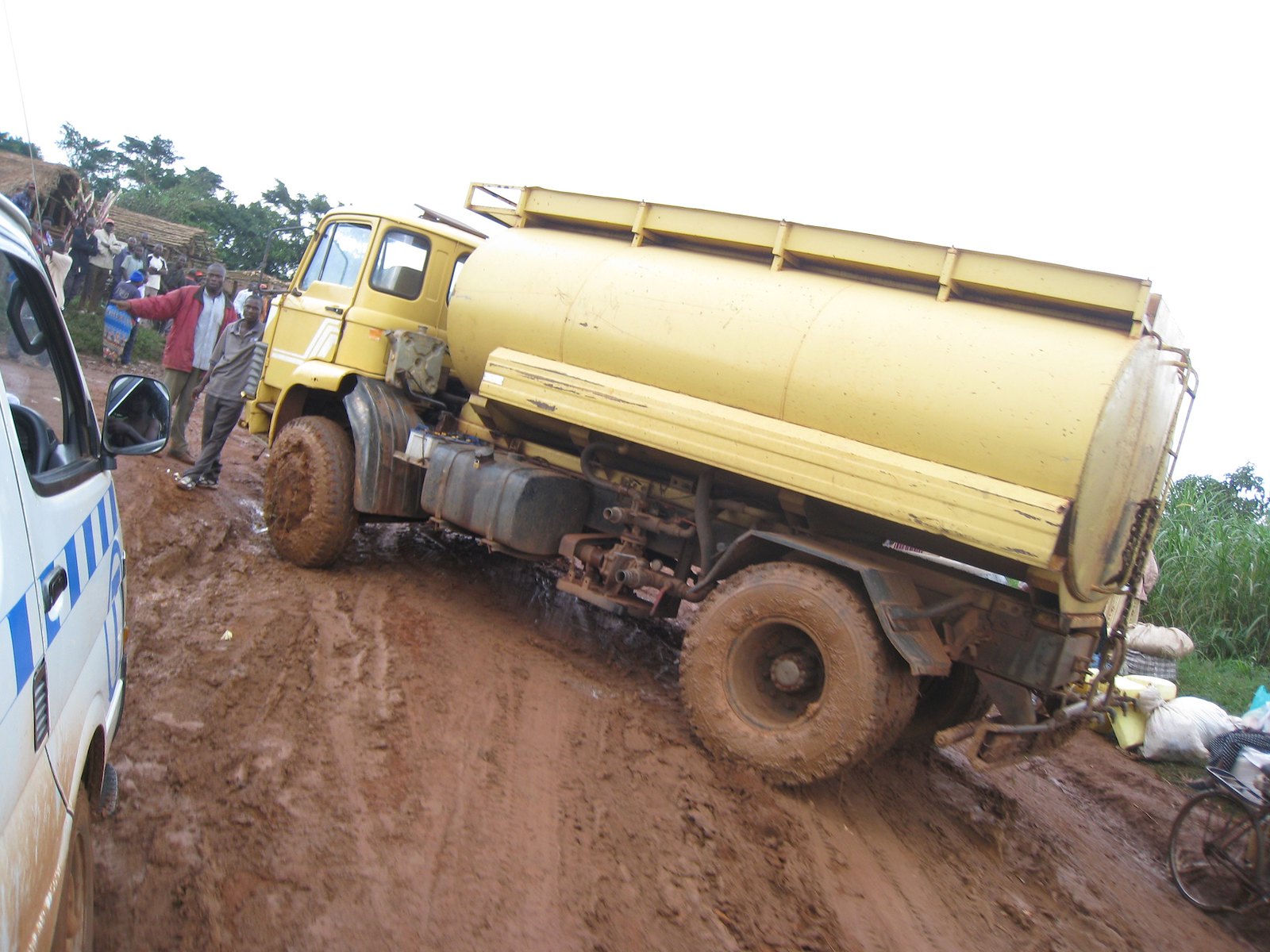We had a vast distance to cover on our overnight journey between Nairobi and Kampala, Uganda’s capital city—505km. I don’t think I could sum up the journey any better than Akamba’s Public Road Services own website; Akamba Passenger Services are described as, “A courier service is a company that helps businesses ship packages all over the world cheaply and overnight by using the cargo space normally allotted to passengers.” If you click on the link entitled ‘Credibility’, you will notice it leads you to a page named ‘blank.htm’. As for the bus we were being shipped on, our window lacked a latch. Now, let me dispel any myths here and now that equatorial countries do not get cold—Kenya was cold that night, and as our window slowly shook open, cold air would wake us from our two or three minute sleep. Everyone was cold, even those with window latches, and wrapped in mismatched blankets. The pile of blankets that was our driver changed gears using a gearshift wrapped in a hoodie. It was as though a homeless shelter hijacked the bus and we were fleeing the country. Very slowly. As soon as the bus gained any speed on the short strips of tarmac, the driver would mash the brakes to inch past a pair of spike strips haphazardly laid every dozen kilometres or so. Not a bad deal, really: rather than pay a hefty fine for speeding, you’ll just destroy all your tires and, if you manage to avoid careening out of control, you get off without any demerit points. Program ‘spike strips everywhere’ has freed up precious police resources to fill the gaps between the spike strips. Again, as soon as the bus gained any speed, it would grind to a halt and become subject to a random search that consisted of sophisticated police techniques such as ‘poking random bags with batons’ and ‘staring at you’. If you end up in a similar situation, we found that the ‘not speaking Swahili’ and ‘wearing sunglasses’ techniques are a good counters.
Thirteen hours later (I’ll let you do the math as to our average speed), we finally reached Kampala—and the Akamba bus was only a sample of what was to come:
- To get to our hostel from the bus station, we hired a pair of boda-bodas (motorbike taxis). The drivers reassured us they would take their time and be careful, but those reassurances seemed to vanish once we agreed on a price. My driver made short work of the Kampala gridlock. While forcing pedestrians off the sidewalk to use as his personal highway, he would turn and use his favourite expression, “Traffic? What traffic?”.
- After some time in Kampala, our Murchison Falls travel group of 7 (more on this in our next post) boarded a bus to Masindi—well, the bus intended to go to Masindi, but a water tanker had spun on the muddy road and blocked the way forward. Our group, not wanting to waste any time, quickly hired a matatu (shared van taxi) to bring us the rest of the way. Undeterred by what happened to the truck, the matatu driver drove at over 100 km/h across the mud—resulting in two members from our ill-formed group of 7 punching the back of the driver’s seat and screaming the whole ride.
- The matatu we hired to take us to and from Murchison falls was fine, until we ran out of gas—resulting in two members from our ill-formed group of 7 doling out profane attacks on the driver’s character. Fortunately, after about 20 minutes, the driver did manage to find a someone who would part with a few litres of petrol. About an hour later we ran out of gas again.
- To get to the distant town of Buhoma (no longer with the group of 7), we had no choice but to get in the back of a pick-up truck. Doesn’t sound so bad, does it? Sitting in the back of a pick-up truck, going down a dusty dirt road, not a care in the world—just like the country songs promised. Ok, now let’s say you’re in that pick-up truck for 6 hours. Now add 25 other people, some rain, and–why not—a couple of live chickens. Oh, you’re also on a dangerous, slippery mountain path.
- To avoid a return journey in the pick-up truck, we were told to stay the night in Butogota (described in the Lonely Planet only as “avoid if possible”), and catch the one and only bus out of town between 4 and 6am (depending on how the driver felt). That night, while dining on rice-filled samosas, we learned that the bus didn’t quite make it—the classic ‘a tractor-trailer flipped over, spun, and blocked the only road to town’ had occurred. Fortunately, very early the next morning, an enterprising pick-up driver drove around town at mashing his horn; his promise, to free us from Butogota and get us to where the tractor-trailor had flipped over. Along with half the town, and some chickens, we made it to the bus. We were home-free, we were on our way to Kampala…
- …and then couple hours in, one of the rear tires blew up, shattering the windows in the row directly behind us. We appeared to be the only two phased by the shattering of the windows. The conductor moved the glass shards to the floor with a smile and reassured us everything was fine, not to worry. A few hours later, when the bus stopped for repairs (a four hour pit stop), a conversation with the conductor revealed that the rear brake system had also failed, and through a heated argument, he had finally convinced the driver to stop to repair the bus.
Sure, transport in Uganda was kind of dangerous, but through all the tumultuous transport, Uganda did not disappoint–as you will read in my next post.




wow. *shakes head* although i know that was *crazy* for you all, it does make for quite the travel story — you’ve more than earned your stripes :-)
Absolutely stunning photos, Jonathan, National Geographic quality in what you have an eye for…..